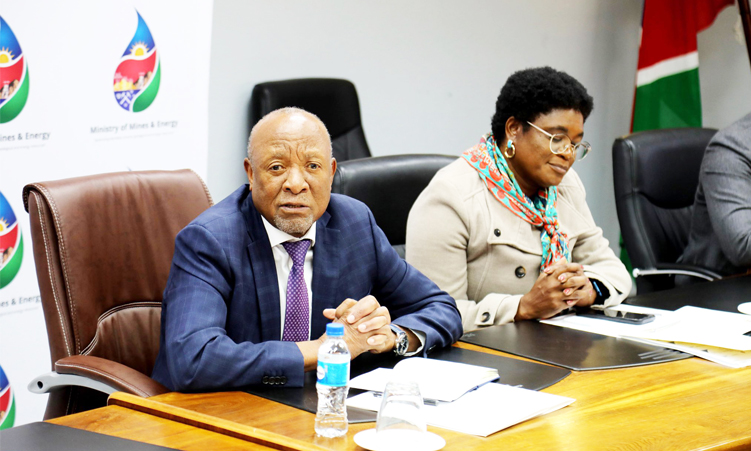Namibia has witnessed the groundbreaking ceremony of what will be the first carbon-neutral iron ore mine in the world.
The mine, at farm Bloomfontein 109 near Arandis, is worth N$600 million.
The project, known as HyIron’s ‘Oshivela Project’, is the first green iron project in the world and a first for Namibia.
“Namibia has enough iron ore to supply the whole world with all the iron ore needed, and this project will be producing 15 000 tonnes in its pilot stage, which puts Namibia at centre stage,” Johannes Michels, the managing director of the project, said yesterday.
The pilot stage is set to start towards the end of next year.
Michels said the project is a joint venture between different companies.
“The overall investment is currently N$600 million, with a third of that coming from the German ministry of economy and climate,” he said.
He said the project would employ 50 people during its pilot stage.
“The employment opportunities are endless when it comes to the project when in full motion, because in Africa alone the demand for iron is 60 million tonnes, and two billion tonnes worldwide,” Michels said.
“The Kunene region is one of the hardest hit regions by socio-economic problems, yet it has the biggest iron ore resource in the country,” he said.
Michels said Namibia has a competitive edge, because no other country in the world can produce or sell green iron.
“There is no market price, therefore we will be setting the price, and we can’t say how much that would be, because we don’t know the actual cost of production yet,” he said.
Michels, however, said HyIron would not incur any losses as its prices would be low.
Speaking at the event, the minister in the Office of the Presidency, Christine //Hoëbes, said this project is part of Namibia’s goal to reach net zero emissions.
“The HyIron Oshivela Project is a step towards building on our commitment to environmental stewardship and sustainable development, because the government has committed to attain net zero carbon emissions by 2050,” she said.
//Hoebes said collaboration would allow for skills development and transfer.
“I am inspired by the prospects of collaboration and knowledge transfer to empower Namibians working on this project with new skills that would enable them to adapt and thrive in the new green economy.
“I often hear people saying ‘Namibia’s time has come’, and I couldn’t agree more. I believe as a nation, we are standing at the dawn of a new era, particularly in the area of green hydrogen and renewable energy,” she said.
Thorsten Hutter, Germany’s ambassador to Namibia, said although Germany is interested in importing minerals, Namibia comes first.
“As Germany, we are interested in importing minerals, however, Namibia comes first and it needs to profit from green hydrogen projects for economic growth.
“When the industrial production of iron starts, it will place Namibia higher up in the value chain, and the country should capitalise on this for constant revenue flow,” he said.
Hutter said iron production would provide Namibia with a lot of opportunity.
Stay informed with The Namibian – your source for credible journalism. Get in-depth reporting and opinions for
only N$85 a month. Invest in journalism, invest in democracy –
Subscribe Now!






